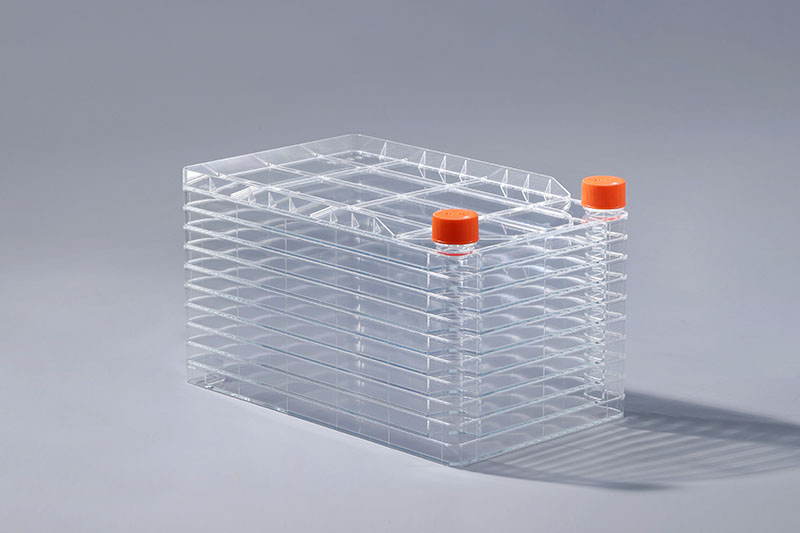là cấu trúc nhiều lớp của vật tư tiêu hao nuôi cấy tế bào, có lợi thế về diện tích nuôi cấy lớn, chiếm không gian thực vật nhỏ và mức độ ô nhiễm thấp. Để đảm bảo chất lượng của sản phẩm, cần có nhiều thử nghiệm khác nhau và thử nghiệm vi khuẩn ô nhiễm ban đầu là một trong số đó. sản phẩm được tiệt trùng. Đây là phép thử giới hạn vi sinh vật, đề cập đến mức độ nhiễm vi sinh vật của các sản phẩm được tiệt trùng không theo quy định và nguyên liệu, phụ liệu và thành phẩm trước khi tiệt trùng, bao gồm cả lượng ô nhiễm và vi khuẩn kiểm soát. , nghĩa là, số lượng khuẩn lạc thông thường, kiểm tra coliform và vi khuẩn gây bệnh. Mục đích của thử nghiệm này là cung cấp chỉ số tham chiếu cho lần khử trùng tiếp theo của nhà máy tế bào, chẳng hạn như liều lượng khử trùng, để đảm bảo hiệu quả khử trùng. Đây có thể nói là một thử nghiệm để giám sát hiệu quả của quá trình tiệt trùng. To Tóm lại, mục đích của việc phát hiện vi khuẩn gây ô nhiễm ban đầu trong nhà máy tế bào là để xác nhận liều lượng khử trùng, theo dõi hiệu quả của quá trình khử trùng, và do đó đảm bảo tính vô trùng của sản phẩm. Đối với phân tích tạp chất sinh học, ít nhất 10 mẫu được lấy từ ba lô sản phẩm riêng biệt để thử nghiệm. Phân tích tạp chất sinh học phải được thực hiện theo một phương pháp đã được xác nhận và có sẵn. Vi sinh vật tạp nhiễm trung bình của mỗi lô được tính toán và vi sinh vật tạp nhiễm trung bình của 30 mẫu được sử dụng làm tổng vi sinh vật tạp nhiễm trung bình của ba lô. Nếu vi sinh vật tạp nhiễm trung bình của một trong ba lô lớn hơn hai lần hoặc nhiều hơn tổng tạp nhiễm sinh học trung bình, thì giá trị trung bình của lô được sử dụng để xác minh liều lượng, nếu không, giá trị trung bình tổng thể của ba lô được sử dụng để xác minh liều lượng.
Generally speaking, the initial contamination bacteria test is the estimated value of the bioburden of the product to be sterilized. It is a microbial limit test, which refers to the degree of microbial contamination of non-specified sterilized products and raw materials, auxiliary materials and finished products before sterilization, including the amount of contamination and control bacteria. , that is, the usual colony count, coliform and pathogenic bacteria inspection. The purpose of this test is to provide a reference index for the next sterilization of the cell factory, such as the sterilization dose, so as to ensure the sterilization effect. It can be said to be a test to monitor the effectiveness of the sterilization process.
For bioburden analysis, at least 10 samples were drawn from three separate batches of product for testing. Bioburden analysis must be performed according to a validated and available method. The average bioburden of each batch was calculated and the average bioburden of 30 samples was used as the total average bioburden of the three batches. If the average bioburden of one of the three batches is two or more times greater than the total average bioburden, the batch average is used for dose verification, otherwise, the overall average of the three batches is used for dose verification.
To sum up, the purpose of the initial contaminating bacteria detection in the cell factory is to confirm the sterilization dose, monitor the effectiveness of the sterilization process, and thus ensure the sterility of the product.
The FAI climbed 5.9 percent year-on-year in the first 11 months of 2018, quickening from the 5.7-percent growth in Jan-Oct, the National Bureau of Statistics (NBS) said Friday in an online statement.
The key indicator of investment, dubbed a major growth driver, hit the bottom in August and has since started to rebound steadily.
In the face of emerging economic challenges home and abroad, China has stepped up efforts to stabilize investment, in particular rolling out measures to motivate private investors and channel funds into infrastructure.
Friday's data showed private investment, accounting for more than 60 percent of the total FAI, expanded by a brisk 8.7 percent.
NBS spokesperson Mao Shengyong said funds into weak economic links registered rapid increases as investment in environmental protection and agriculture jumped 42 percent and 12.5 percent respectively, much faster than the average.
In breakdown, investment in high-tech and equipment manufacturing remained vigorous with 16.1-percent and 11.6-percent increases respectively in the first 11 months. Infrastructure investment gained 3.7 percent, staying flat. Investment in property development rose 9.7 percent, also unchanged.
 English
English



















































